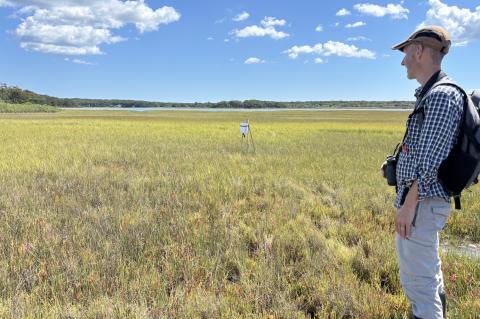While we humans are pinned down by gravity, there’s an overnight flow of birds hundreds and thousands of feet overhead using sound as their invisible traffic control system.
On the Wing
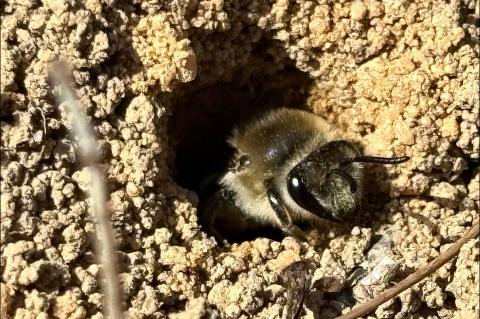 On the Wing: Early Bee Already Busy
On the Wing: Early Bee Already BusyHundreds of small mounds with holes, each the diameter of a pencil, surrounded me. Above them zigging, dark, smallish bees traced incomprehensible patterns through the air: cellophane bees.
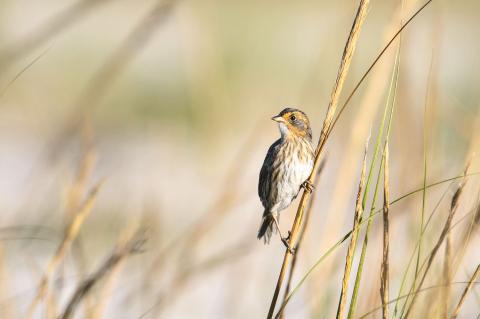 Birds Here Are in Trouble
Birds Here Are in TroubleBirds are in trouble everywhere, but it turns out our birds here on the East End are in even worse shape than most. On our beaches, shorebirds have lost 33 percent of their population since 1970, and in our trees, songbirds continue to experience significant population declines, losing 27 percent in the same period, according to the 2025 State of the Birds report from the North American Bird Conservation Initiative.
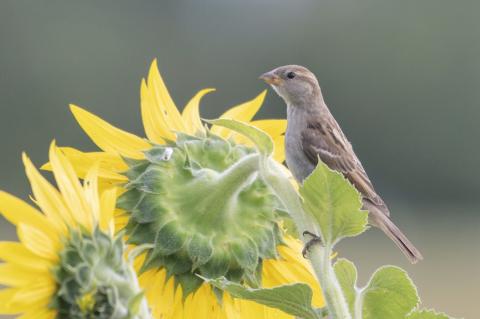 On the Wing: Love, Hate, and House Sparrows
On the Wing: Love, Hate, and House SparrowsOn the East End, we hear a lot about invasive species in the plant world, but the house sparrow was one of the original invasive species. House sparrows are bullies. They fight over dirt baths. They are nonmigratory, colonize habitat, and then profusely breed. When native migratory birds return to nest in the spring, these pugnacious birds force them away.
 On the Wing: Birding With the Dead
On the Wing: Birding With the DeadSummer is perhaps the worst time of year to bird. You’re birding but you’re not really birding. Leave your binoculars at home. Leave your iPhone and Merlin app in the car. This is not for that. Instead, stroll through the cemetery, grow thoughtful, and let the birds, many of which will live only a few years, be your soundtrack.
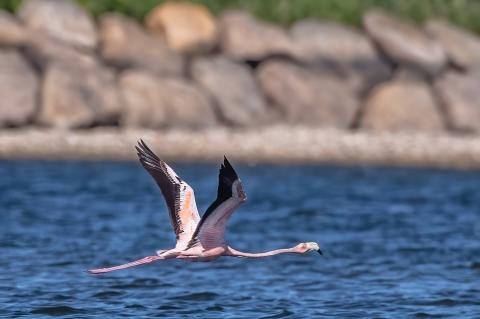 Georgica Flamingo Has Flown Onward
Georgica Flamingo Has Flown Onward“It’s the first in a very long time” to visit New York State, “if not the first ever,” said Shai Mitra, an assistant professor at the College of Staten Island, said of the American flamingo that visited Georgica Pond in East Hampton last week. The bird was last seen there Saturday at dusk.
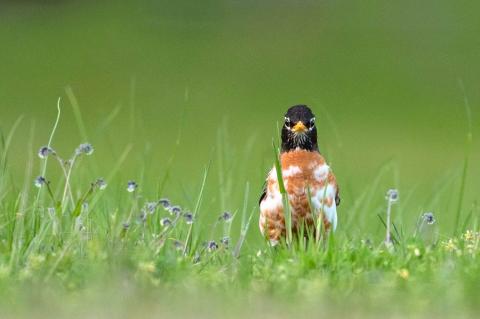 On the Wing: Dawn Chorus in Spring
On the Wing: Dawn Chorus in SpringThe dawn chorus of birdsong is different depending on your habitat, your location, and the time of year. Songbird migration will peak by mid-May. As songbirds migrate overhead during the night, they blanket the sleeping country with sound, calling to each other to keep their flocks together and tight. When they land, they sing us awake.
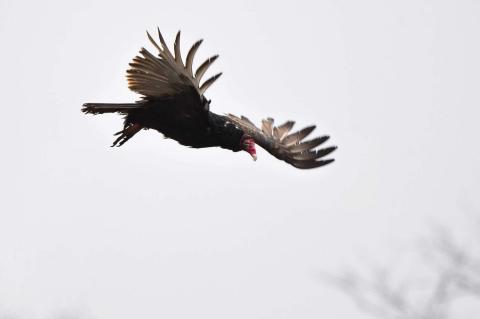 On the Wing: A Majestic Dump Dweller
On the Wing: A Majestic Dump DwellerIf given the opportunity, a turkey vulture would eat you, your kids, and your little dog, too. Other bird species may be struggling, but the turkey vulture is doing just fine eating dead things. Yes, with increasing signs that the end is nigh, the turkey vulture is a strong candidate for Bird of 2024.
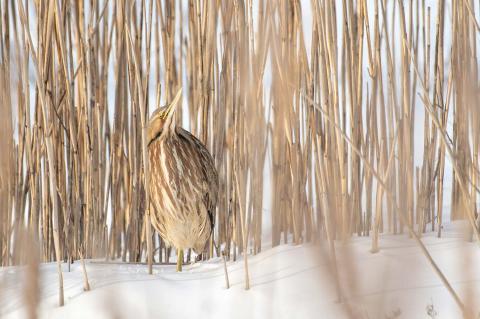 On the Wing: Like Reeds in the Breeze
On the Wing: Like Reeds in the BreezeOdds are, you’re not going to see an American bittern, despite its large size. Frankly, the American bittern doesn’t want to be seen; it chose invisibility as its superpower. Still, this is the best time of year to try; make the experience at least as much about the journey as the destination.
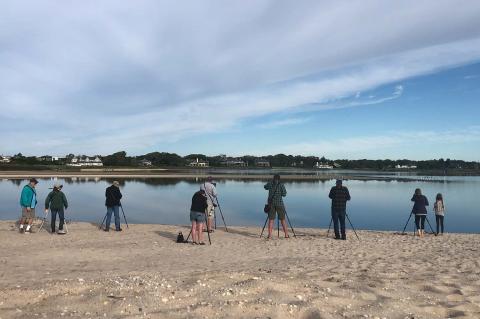 For ‘Listers,’ the Bird Species Race Is On
For ‘Listers,’ the Bird Species Race Is OnWhen the ball drops marking the beginning of the new year, for some, a silent gun goes off and an invisible race begins. They’re the bird listers, and their goal is to find as many different species of birds as they can over the next year.
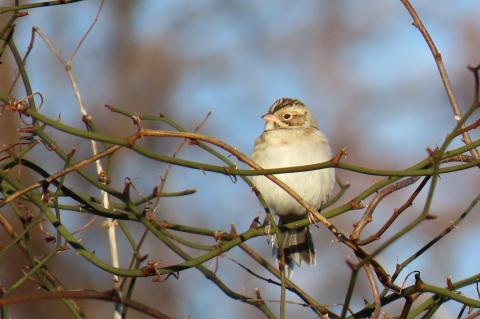 On the Wing: ‘Gifts’ of the Christmas Bird Count
On the Wing: ‘Gifts’ of the Christmas Bird CountWhen darkness closed out the Audubon Montauk Christmas Bird Count and the species were tallied, participants agreed that the good weather might have played a role in the total: 134 were found, the highest in a decade.
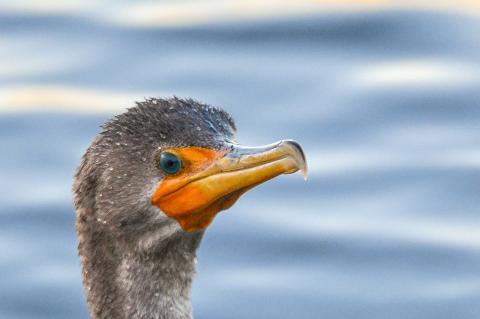 On the Wing: The Slightly Creepy Cormorant
On the Wing: The Slightly Creepy CormorantThere is something creepy about cormorants. From most distances, they look black, with long thick necks, tails, and wings. In flight, they appear like black crosses. Against a cormorant, fish have no hope; the tip of their orange bill is hook-shaped, a perfect tool to capture over 250 species of fish. Soon those single black crosses will join to form sky-wide, shape-shifting patterns as they migrate away.
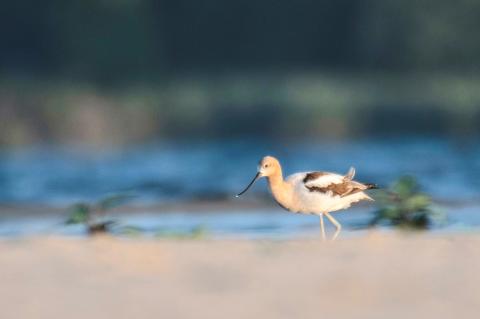 On the Wing: Epic Summer for Rare Birds at Mecox
On the Wing: Epic Summer for Rare Birds at MecoxJust over the lip of the dune bordering the lot at Scott Cameron Beach is one of the most important habitat areas for shorebirds on the entire East End: Mecox Inlet.
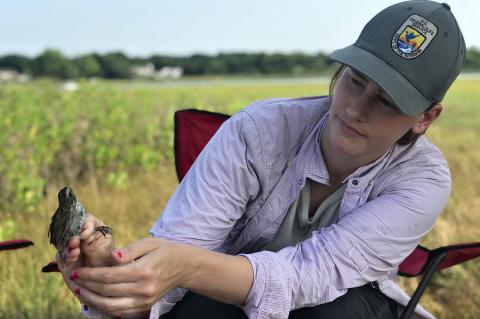 A Vulnerable Bird Endures in a Springs Marsh
A Vulnerable Bird Endures in a Springs MarshEast Hampton is downright lucky to have a population of saltmarsh sparrows, birds that are vulnerable because of their dependence on a habitat that shrinks with every centimeter in sea level rise: the salt marsh. The sparrows themselves are not so lucky: they've lost 75 percent of their population since 1990. The U.S. Fish and Wildlife Service is assessing whether the bird should be listed under the Endangered Species Act.
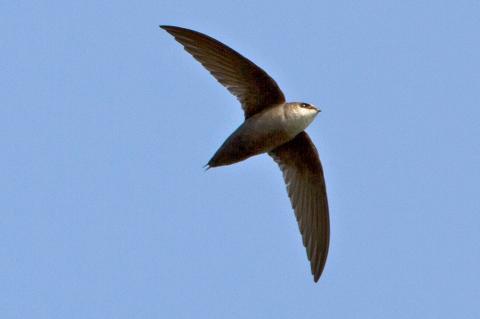 On the Wing: Swift in the Air, Rarely on Ground
On the Wing: Swift in the Air, Rarely on GroundThis is the best time of year to observe chimney swifts locally as they burst through the skies over our villages. You’ll never see a chimney swift land, or even come close to street level. In their daily circuits, they can fly 500 miles a day in pursuit of something like 12,000 flying insects.
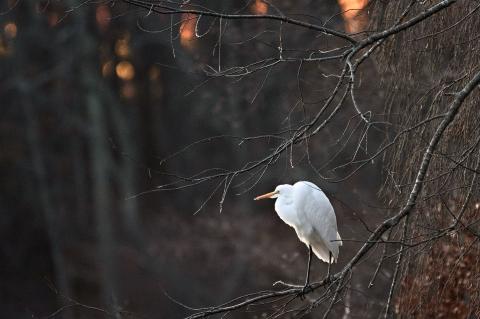 On the Wing: Where Great Egrets Go
On the Wing: Where Great Egrets GoIt’s hard to mistake the great egret: lengthy yellow bill, long black legs, large white body in between. They have sinewy necks, sometimes stretched straight, other times tucked into a squat S, as when they’re flying.
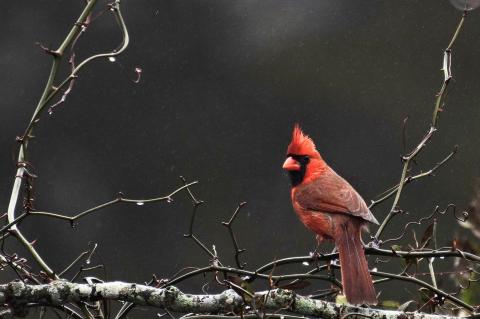 On the Wing: The Cardinal Rules
On the Wing: The Cardinal RulesCardinals, among our earliest singer each spring, are so familiar you might forget to appreciate them, but a century ago they were rare in New York.
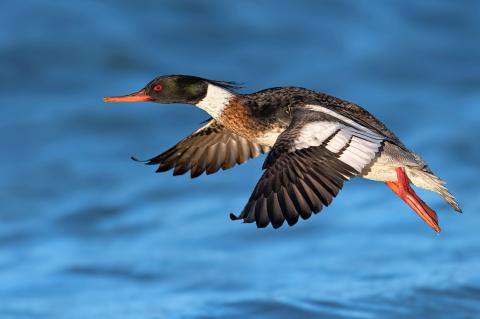 On the Wing: Lost in Merganser Time
On the Wing: Lost in Merganser TimeRed-breasted mergansers rely on the open waters of our winter bays and harbors from November until April. They’ll be there if you walk anywhere along the bay side of the South Fork, between Southampton and Montauk. While they prefer salt water, they also frequent Hook Pond, Sagaponack Pond, and Georgica Pond.
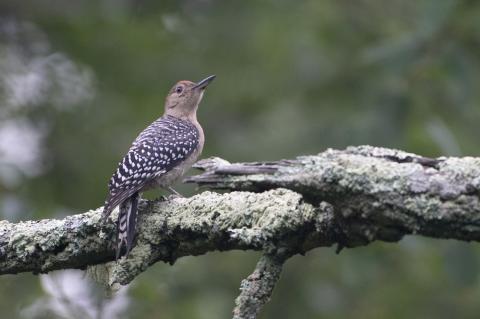 On the Wing: We Should Call It the Zebra Bird
On the Wing: We Should Call It the Zebra BirdYou don’t need to go deep into the woods to find a red-bellied woodpecker, but if you're looking for a distinctive red belly, you won't find it. Instead, its head is red, which explains why people often misidentify it as the red-headed woodpecker, which hardly shows up on Long Island.
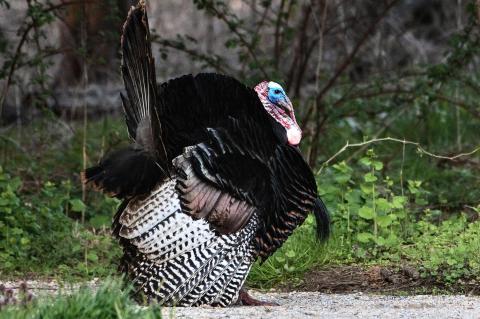 On the Wing: Turkeys, Turkeys, Everywhere
On the Wing: Turkeys, Turkeys, EverywhereIt’s hard to decouple the turkey from Thanksgiving, but long before we paired turkeys with mashed potatoes and stuffing and turned them into a national symbol, they were going about their business, hanging out in gangs, flipping leaves, and browsing the ground for nuts.
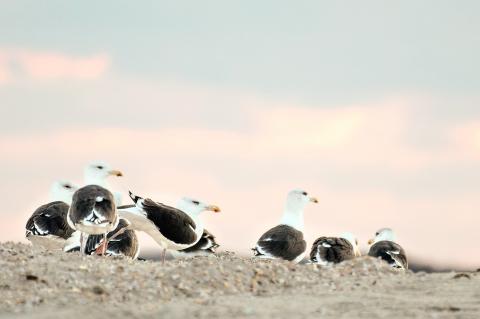 On the Wing: The State of the Birds, Good and Bad
On the Wing: The State of the Birds, Good and BadBird populations have declined steeply over the last 50 years, but the North American Bird Conservation Initiative's "State of the Birds 2022" report, published in early October, balanced the gloom with some success stories and offered strategies for future action which would "bring birds back."
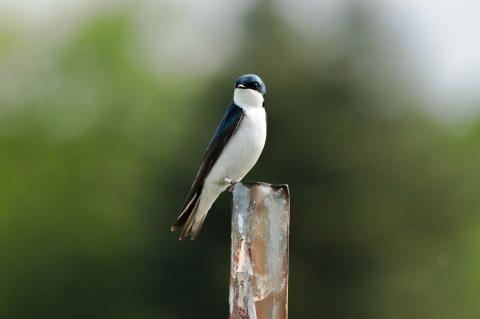 On the Wing: Tiny Swallows and Big Gulps
On the Wing: Tiny Swallows and Big GulpsA large group of tree swallows is called a gulp, which proves ornithologists are not without humor. Before the leaves change, gulps of swallows crowd our beaches. At Mecox Inlet, Sagaponack Pond, and the dunes that circle Napeague Harbor, hundreds, and sometimes thousands, of tree swallows collect.
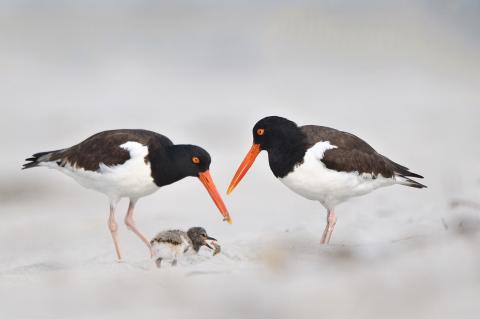 On the Wing: A Bird to Be Proud Of
On the Wing: A Bird to Be Proud OfAmerican oystercatchers, which congregate in the marshes of our barrier beaches before flying south, are about the size of crows, and stout, with heavy white bellies, chocolate-colored wings, and pale pinkish legs. They wear a black executioner’s hood and have a long blood-orange oyster knife of a bill and yellow eyes circled by red eye rings.
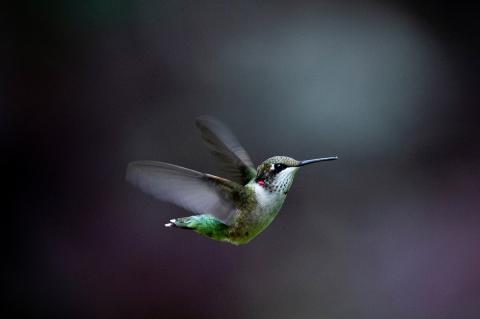 On the Wing: The Hummingbird’s Secrets
On the Wing: The Hummingbird’s SecretsDespite the confusion and tragedy of American life in 2022, they somehow return each spring; like flying foil-wrapped gifts come to life. And now, as early as this week, the males will depart from our area to begin their largely daytime migrations south. This is one of the most entertaining weeks to “feeder watch,” as they defend their last sips.
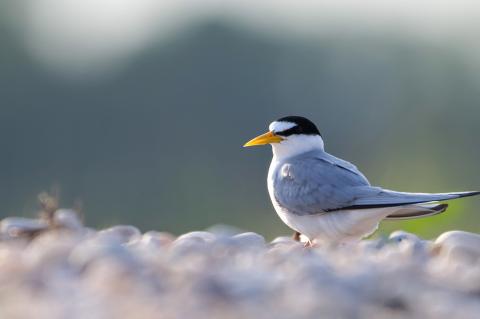 On the Wing: The Least Tern Is Most Interesting
On the Wing: The Least Tern Is Most InterestingLeast terns are properly named, they’re our smallest tern, and thin. They slice through the air, buoyant and bouncy, on clipped wingbeats, patrolling the waters below. They’re very vocal. Their call is high-pitched and squeaky, with a sharp grating quality. Learn it, and you will often hear them before you see them.
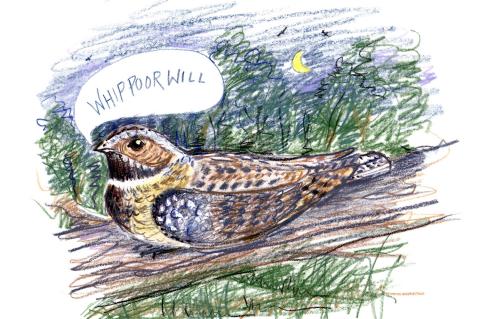 On the Wing: The Lonesome Whip-Poor-Will
On the Wing: The Lonesome Whip-Poor-WillThe scientific name of the whip-poor-will, Antrostomus vociferus, is spot-on. According to “Birds of America,” edited by T. Gilbert Pearson, “the first word . . . means ‘cave mouth’ and the second . . . ‘strong voice.’ ”
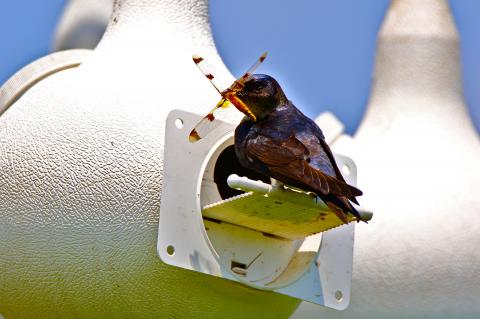 On the Wing: The Endlessly Interesting Purple Martin
On the Wing: The Endlessly Interesting Purple MartinAs long ago as 1936, when T. Gilbert Pearson published “Birds of America,” purple martins were almost exclusively dependent on man-made housing. Here on the East End, they arrive in early April to the houses waiting for them and by Labor Day they're gone.
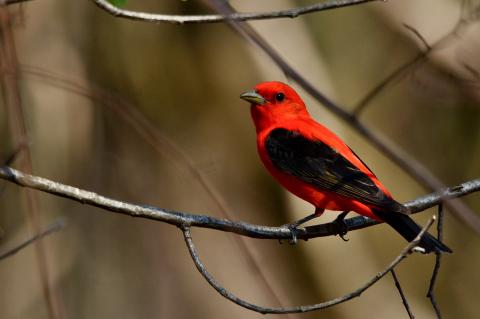 On the Wing: The Best-Looking Songbird You've Never Seen
On the Wing: The Best-Looking Songbird You've Never SeenScarlet tanagers breed in forest interiors. Take a walk on the Sprig Tree Trail in Sag Harbor, or along the Round Pond Trail where they sing and breed. You'll also find them at the Grace Estate, Hither Woods, and Barcelona Neck. The trick is to find a large expansive stretch of woods and listen.
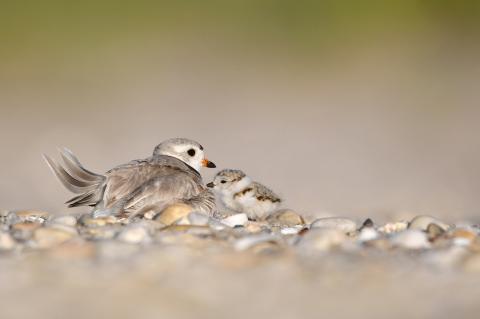 On the Wing: The East End's Most Controversial Bird
On the Wing: The East End's Most Controversial BirdWhen beaches are closed because of nesting plovers, people get pretty riled up. The birds, which are endangered in the country and New York State, may seem to be prolific here, but in fact nest on only a handful of beaches on the East End. They're also site-specific, returning year after year to breed in the same spots.
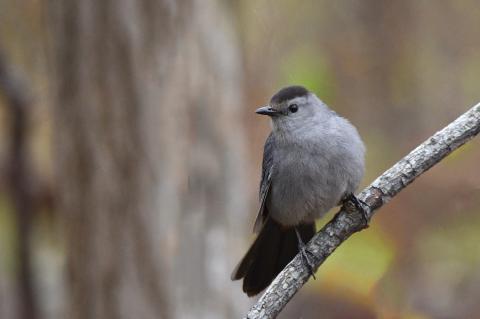 On the Wing: The Catbird’s Fine Company
On the Wing: The Catbird’s Fine CompanyCatbirds are neither rare nor shy. Work in your garden and you may soon have a catbird working alongside you. They're charming, excellent company, and release a seemingly infinite number of sounds when they open their black bills.

